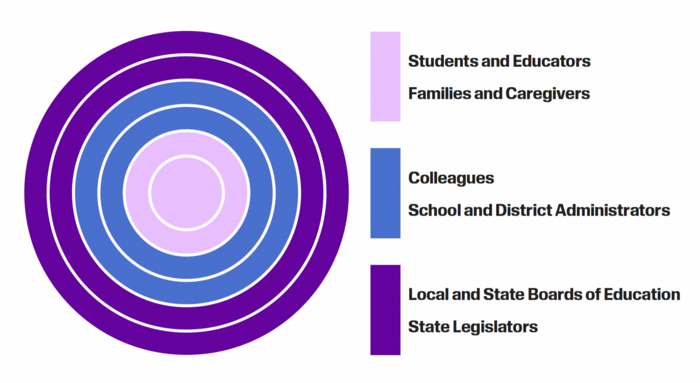This guide is divided into sections based on educators’ areas of influence. The ability to influence various spheres in education is based on the power educators hold at different levels
of the school ecosystem. Classroom teachers have more direct influence at the classroom level with students. Their influence is often less direct at the district level with administrators and school board members. This guide is organized with these power dynamics in mind to help educators navigate the content and choose their areas of focus.
In the diagram, starting from the center and moving outward, the color-coded spheres illustrate areas in the order in which educators have influence. Pink spheres are classroom level, blue spheres are school and district level, and purple spheres are at policy and legislative levels.
The people in the spheres include:
Pink Spheres (Classroom Level):
- Students and educators
- Families and caregivers
Blue Spheres (School and District Level):
- Colleagues
- School and district administrators
Purple Spheres (Legislative Level):
- Local and state boards of education
- State legislators
